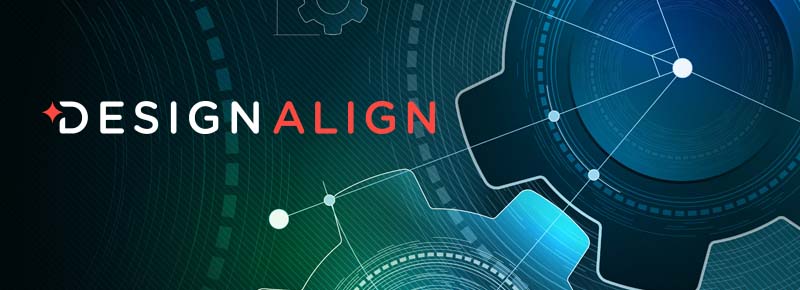“Quality in a service or product is not what you put into it. It is what the customer gets out of it.” —Peter Drucker
Those looking to have their kitchen or bath remodeled have been socialized into thinking they need at least three estimates from reputable companies before deciding.
But what if those three estimates came from one reputable company, and what if they were delivered in such a compelling, meaningful way that prospects retained you before you took measurements of their existing kitchen — or they sought a quote from another firm?
The most important strategy SEN wants its members to focus on is how you are going to deliver your product and services to ecstatic buyers.
Let your services speak to your values
There is a lot of stiff competition in the digital age. You have to differentiate without even being present — through your website, blogs, and user reviews — before anyone steps foot in your showroom.
The bottom line, when it comes to decision-making, people have to come to conclusions on their own.
A prime characteristic of the traditional industry sales approach involves five steps:
- Needs Analysis
- Measurements
- Plan & Price
- Presentation/Attempt to Close
- Chasing the Prospect
To get people to buy your kitchen and bath designs and refer other people to your services — play into your prospects’ emotions. Adopting a different sales approach is paramount. Doing something that disrupts the conventional process, gains prospects’ attention and generates value is what you want.
Prospects will form a perception about your firm based on what you say your product and services stand for. When a prospect sees that their values match those of your firm — you’ve made a loyal customer for life.
What constitutes a superior delivery?
Trust is the #1 reason why consumers make purchase commitments.
In the kitchen and bath industry, there are two ways to develop trust from prospective clients so that they buy from your firm and feel great that they did.
- Start with a meaningful visual marketing presentation. Your aim is to deliver a service and a product to your prospects in a positively impactful way. Meaningful consumer experience begins with a successful showroom meeting.
- Create value for the prospect.
The top three attributes for creating value are information, solutions, and speed.
- Information — Sales designers should be wellsprings of information to prospects on the products your firm handles
- Solutions — Provide the right number of options for your prospects, and present them in a meaningful way so that they can make an informed buying decision on their own
- Speed — The first proposal a prospect receives is often the one chosen and sets the tone for the entire project.
Each of these value creators requires people. You want to have the best people on your staff stationed in the right roles because people are the face of your firm.
Going up against the big box stores
Beginning in the mid-1980s, the big box stores started to make a name for themselves as an upset to the kitchen and bath industry. Their advent came as a one-two punch to most independent dealers. These big boxes dedicated large spaces of their stores to kitchen and bath displays. And they had done their homework — having sought out and received valuable sales and design training for their team from the kitchen and bath industry’s leading trade association.
Then, they marketed their staff as “NKBA-trained designers,” undermining the value of independent dealers who founded the trade association and used that membership accreditation to have their professionalism stand out.
There was no way to compete with the big box stores in terms of outspending their marketing dollars. Slashing prices was ineffective and counterproductive as well. To compete against the Goliaths, most kitchen and bath dealerships:
- Evolved towards higher-end clientele
- Created more expansive, upscale display “whole room environments”
- Used their showrooms for event space — where they hosted wine tastings and cooking classes, sometimes hosted by celebrity chefs
- Stepped up their game by becoming certified and promoted their design credentials
The intangibility of kitchens and baths
The kitchen and bath dealer has a challenging task: to market an expensive design and installation service that takes months to deliver and assemble the tangible end product in the consumer’s home.
Prospects buy with emotions while designers sell promises, dreams, and happiness. That’s why kitchen and bath dealerships need more than great displays of high-quality products to get retained. To ensure their success, kitchen and bath dealers must sell the proof in the service by “tangiblizing” their value throughout the buying process.
There is one area kitchen and bath dealerships have over the big box stores in spades: kitchen and bath firms are able to draw from an extraordinary set of diverse skills, product knowledge, and better-trained personnel with decades of experience in the industry!
The visual proof in the service of your products begins with your personnel. Consumers will pay more — a lot more — for outstanding service if they experience that proof firsthand. You can’t fake expertise.
Personal touches communicating your company’s code of values
You do have a leg up on the big box stores — capitalize on your assets!
Your firm’s two most significant assets are:
- Your people
- Your educational process of doing business
You can “tangiblize” their value by hanging photos of them in your showroom, complete with titles and brief biographies — and use a physical or video “storyboard” to “tangiblize” the value of your sales process.
Communicate to your prospect what your firm stands for with a set of printable, framed messages that come directly from you.
It’s your personnel who give expert information and create solutions for your clientele. But, where does the speedy delivery come from? Certainly from your expert installers on the one hand. But the vast majority of kitchen and bath dealers take two to three weeks to get back to their prospects with a design solution and price. Sometimes it takes longer because there are so many leads to follow up with! This is where you can differentiate your company from the competition.
Choices and transparency create trust
So, how do you ensure a speedy delivery?
Modern buyers make informed purchases. They want to be educated about their options, not sold products and services!
Choice empowers a consumer to purchase with confidence. So, deliver those choices — and their likely project budget total — during your very first prospect meeting.
Studies have shown that giving people three options, small, medium, and large is usually the most effective way to offer choice. Good-Better-Best selling is everywhere. Take note of it as you come across product displays in the technology, automotive, and food industries. Even numerous cabinet companies in our industry have three different construction offerings.
Having more than three options involves more costs.
- Time — spending a longer time on the decision-making process than is helpful to the buyer
- Error — possibility of regretting one’s decision is much higher
- Physiological — being uncertain of the right decision to make can lead to changing one’s mind — or walking out of a deal!
A Good-Better-Best selling platform, as featured in DesignAlign technology, allows buyers to see all potential outcomes for every product/labor category decision — because the buying process is transparent from beginning to end.
By informing themselves of their options, consumers are trying to predict the outcome of making a purchase. People choose the option they think will make them the happiest. Transparent selling is proven to instill buyer trust and confidence.
When you show your prospect their options and deliver the final budget at the end of their first showroom meeting, you’re empowering them to make a fast retainer commitment on a project that will make them happy for decades to come.
—The SEN Leadership Team




